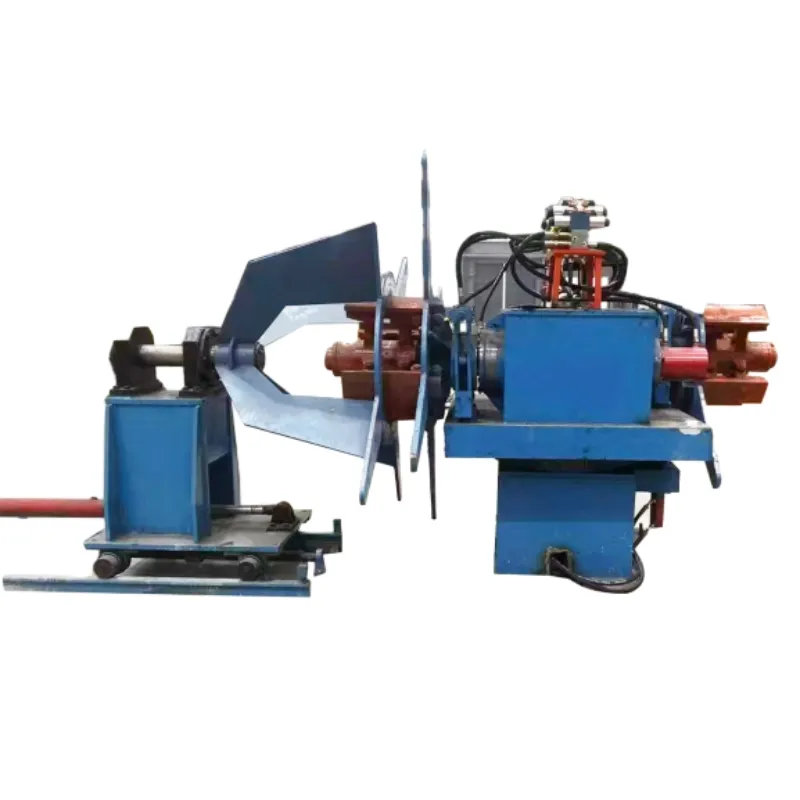straightening and cutting machine
Straightening and Cutting Machines Essential Tools in Modern Manufacturing
In the fast-paced and precision-driven world of modern manufacturing, the importance of straightening and cutting machines cannot be overstated. These machines play a vital role in processing various materials, primarily metals and alloys, ensuring that they meet specific standards of quality, shape, and size. The demand for these machines has surged as industries push for higher efficiency, accuracy, and productivity.
The Functionality of Straightening Machines
Straightening machines are designed to eliminate distortions in metal materials. Metals may become warped or twisted during previous manufacturing processes such as welding or rolling. Straightening machines work by mechanically applying forces to the metal, forcing it back to its original or required shape. This process is essential for producing metals that are usable in applications where strict tolerance levels are required.
Typically, straightening machines consist of rollers and hydraulic systems that guide the metal through a series of adjustments. As the material passes through these rollers, it undergoes a series of flexing and tensioning processes that can effectively restore its shape. The precision offered by modern straightening machines ensures that even the slightest deviations from specifications can be corrected, resulting in a higher-quality end product.
Types of Straightening Machines
There are various types of straightening machines, each tailored to specific materials and configurations. The most common types include
1. Roller Straighteners These machines employ a series of rollers that can adjust their position to apply the necessary forces to straighten the material. They are widely used for bars, tubes, and sheets.
2. Hydraulic Straighteners Utilizing hydraulic systems, these machines offer greater flexibility and power, allowing for the straightening of thicker and more complex materials.
3. Mechanical Straighteners These operate through mechanical means, generally using levers and gears. They are often employed for lighter materials and in simpler manufacturing setups.
straightening and cutting machine

The Importance of Cutting Machines
Cutting machines complement straightening operations by allowing the precise cutting of materials to predetermined lengths or shapes. The cutting process can take many forms, including shearing, sawing, laser cutting, and plasma cutting. Each method offers distinct advantages, depending on the material type and thickness.
In the context of manufacturing, cutting machines are crucial for ensuring that components are cut accurately to specifications. Poorly cut materials can lead to issues with assembly, increased waste, and additional labor costs. Thus, investing in high-quality cutting machines is critical for maintaining an efficient production process.
Integrating Straightening and Cutting Machines
Integrating straightening and cutting machines within a manufacturing line is a strategic approach to enhance operational efficiency. By aligning these processes, manufacturers can streamline production workflows, minimizing the handling of materials and reducing the likelihood of errors.
Advanced systems often incorporate automation, enabling real-time control and monitoring. This integration leads to enhanced precision, quicker turnaround times, and improved overall productivity. Moreover, automated systems are equipped with software that can track performance metrics, further allowing for optimization of the straightening and cutting processes.
Conclusion
In conclusion, straightening and cutting machines are indispensable in the manufacturing sector, facilitating the production of accurately shaped and sized materials. Their ability to ensure that components meet stringent specifications is essential in industries such as automotive, aerospace, and construction. As technology advances, these machines continue to evolve, incorporating automation and better precision mechanisms, which drive efficiency and cost-effectiveness in production processes.
Manufacturers looking to enhance their operations must recognize the value of investing in high-quality straightening and cutting machines. By doing so, they can improve the quality of their products, reduce waste, and ultimately gain a competitive edge in an ever-evolving market. In the age of rapid technological advancements, the role of straightening and cutting machines will only become more critical in supporting the demands of modern manufacturing.
-
High Frequency Straight Seam Welded Pipe Production Line-BzZhou Xinghua Machinery Equipment Manufacturing Co., LTD.|line pipe steel&welded gas pipeNewsJul.30,2025
-
High Frequency Straight Seam Welded Pipe Production Line-BzZhou Xinghua Machinery Equipment Manufacturing Co., LTD.|High Precision&Automated SolutionsNewsJul.30,2025
-
High Frequency Straight Seam Welded Pipe Production Line - BzZhou Xinghua Machinery Equipment Manufacturing Co., Ltd.NewsJul.30,2025
-
High Frequency Straight Seam Welded Pipe Production Line-BzZhou Xinghua Machinery Equipment Manufacturing Co., LTD.|Precision Welding, High EfficiencyNewsJul.30,2025
-
High Frequency Straight Seam Welded Pipe Production Line|BzZhou Xinghua|Precision Welding&EfficiencyNewsJul.30,2025
-
High Frequency Straight Seam Welded Pipe Production Line - BzZhou Xinghua|Precision Engineering&EfficiencyNewsJul.30,2025


